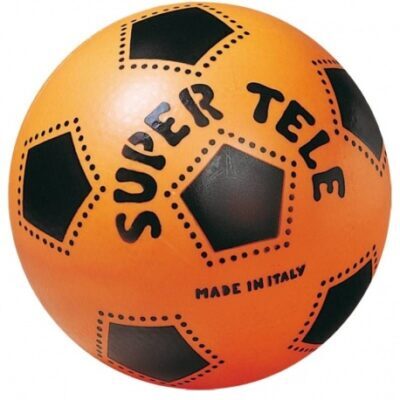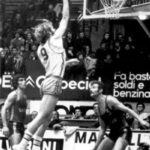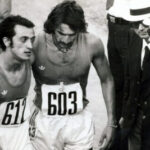December 27, 2024 Stories of sport and life
The name alone, Super Tele, is a masterpiece.
Super Tele, a faithful companion
This is not really a sports figure (except in the figurative sense), but rather a faithful companion that has accompanied the playtime of millions of boys and girls around the world born in the 1970s (but also in the late 1980s) : the Super Tele ball.
In fact, there is no young person born in the 1970s who has not experienced the thrill of holding one of these spherical “myths” in his or her hands.
Usually sold in tobacconists and small-town toy stores, the Super Tele football is an example of ingenuity and creativity.
Although it has been in the Mondo S.p.A. catalogue since 1967, its real moment of popularity was undoubtedly in the 1970s.
It was a very inexpensive balloon, with more or less regulation sizes, but light enough not to cause damage to surrounding objects and infrastructure.
It was perfectly suited to the needs of consumers, who could purchase it through a dense retail network : toy stores and supermarkets, as well as tobacconists, newsstands, small town shops and stands.
In addition, its light weight allowed it to be used by even the youngest children between the ages of three and four.

Even the name, Super Tele, is a real masterpiece : on the one hand, the word “Super” (meaning “superior”) seems to indicate the better quality of the model compared to a possible basic model (which did not really exist), on the other hand, the word “Tele” seems to associate the concept of a ball with a modern meaning.
On some models, the words “re-inflatable” were even added later.
In theory this was true, thanks to a small self-sealing rubber valve, but due to the “sloppy” construction this was instead the main weakness of the ball.
In fact, it tended to fall off and fall back into the ball when you tried to inflate it.
Moreover, it could even come off under particularly hard blows, rendering the ball unusable in any case.
The Super Tele, in addition to being sold at a very low cost, was characterized by being very light : while this made it unsuitable for use in football matches, for example, it had the virtue of reducing the risk of “injuries” and damage resulting from “badly hit” shots.
Its real strength was its negligible cost, which made it popular both with those who did not demand a good product and with those who, although they could afford a better ball, did not want to ruin a good ball in poor matches.
Its natural terrain has always been suburban playgrounds, where children and teenagers spent entire afternoons playing games of little actual value but very high symbolic value.
Mothers preferred the Super Tele because it was really cheap and because they were sure, from the height of their natural concern for their children, that a lob in the face with this ball would not hurt anyone.
The Super Tele also dominated all those places, such as sidewalks and beaches, where the presence of non-players made the use of a harder ball inappropriate.
In any case, its handling, dribble level and aerodynamic stability were decidedly “rough”.
It was almost impossible to intuit the trajectory of a Super Tele thrown forward.
In the ground game it was not excellent, but not bad either ; however, it tended to scratch easily when stressed by friction.
More importantly, it was very easy to puncture.
In fact, most Super Tele’s, handicapped by the easy pierceability of the hull, always had a very short life.





